Related Research Articles
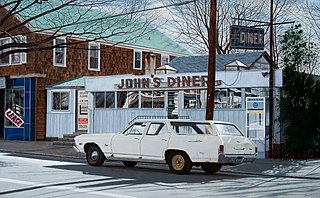
Photorealism is a genre of art that encompasses painting, drawing and other graphic media, in which an artist studies a photograph and then attempts to reproduce the image as realistically as possible in another medium. Although the term can be used broadly to describe artworks in many different media, it is also used to refer specifically to a group of paintings and painters of the American art movement that began in the late 1960s and early 1970s.
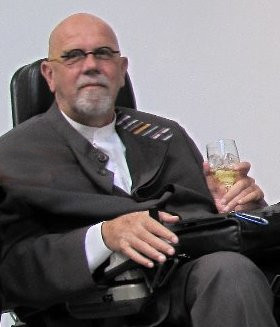
Charles Thomas Close was an American painter, visual artist, and photographer who made massive-scale photorealist and abstract portraits of himself and others. Close also created photo portraits using a very large format camera. He adapted his painting style and working methods in 1988, after being paralyzed by an occlusion of the anterior spinal artery.
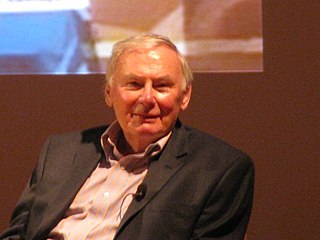
Richard Estes is an American artist, best known for his photorealist paintings. The paintings generally consist of reflective, clean, and inanimate city and geometric landscapes. He is regarded as one of the founders of the international photo-realist movement of the late 1960s, with such painters as John Baeder, Chuck Close, Robert Cottingham, Audrey Flack, Ralph Goings, and Duane Hanson. Author Graham Thompson writes "One demonstration of the way photography became assimilated into the art world is the success of photorealist painting in the late 1960s and early 1970s. It is also called super-realism or hyper-realism and painters like Richard Estes, Denis Peterson, Audrey Flack, and Chuck Close often worked from photographic stills to create paintings that appeared to be photographs."

Ralph Goings was an American painter closely associated with the Photorealism movement of the late 1960s and early 1970s. He was best known for his highly detailed paintings of hamburger stands, pick-up trucks, and California banks, portrayed in a deliberately objective manner.

Don Eddy is a contemporary representational painter. He gained recognition in American art around 1970 amid a group of artists that critics and dealers identified as Photorealists or Hyperrealists, based on their work's high degree of verisimilitude and use of photography as a resource material. Critics such as Donald Kuspit have resisted such labels as superficially focused on obvious aspects of his painting while ignoring its specific sociological and conceptual bases, dialectical relationship to abstraction, and metaphysical investigations into perception and being; Kuspit wrote: "Eddy is a kind of an alchemist … [his] art transmutes the profane into the sacred—transcendentalizes the base things of everyday reality so that they seem like sacred mysteries." Eddy has worked in cycles, which treat various imagery from different formal and conceptual viewpoints, moving from detailed, formal images of automobile sections and storefront window displays in the 1970s to perceptually challenging mash-ups of still lifes and figurative/landscapes scenes in the 1980s to mysterious multi-panel paintings in his latter career. He lives in New York City with his wife, painter Leigh Behnke.
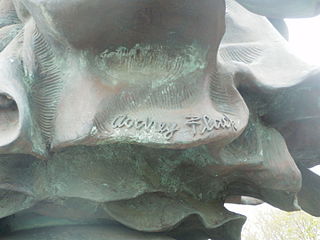
Audrey Flack is an American artist. Her work pioneered the art genre of photorealism and encompasses painting, printmaking, sculpture, and photography.

Glennray Tutor is an American painter who is known for his photorealistic paintings. He is considered to be part of the Photorealism art movement. His paintings are immersed with bright colors, nostalgic items, metaphor, and with a complete focus on detail. Tutor is a graduate of the University of Mississippi where he received his Bachelor of Arts degree in Art and English in 1974 and his Master of Fine Arts degree in Painting in 1976.

Hyperrealism is a genre of painting and sculpture resembling a high-resolution photograph. Hyperrealism is considered an advancement of photorealism by the methods used to create the resulting paintings or sculptures. The term is primarily applied to an independent art movement and art style in the United States and Europe that has developed since the early 1970s. Carole Feuerman is the forerunner in the hyperrealism movement along with Duane Hanson and John De Andrea.
Robert Alan Bechtle was an American painter, printmaker, and educator. He lived nearly all his life in the San Francisco Bay Area and whose art was centered on scenes from everyday local life. His paintings are in a Photorealist style and often depict automobiles.
Thomas Leo Blackwell was an American hyperrealist of the original first generation of Photorealists, represented by Louis K. Meisel Gallery. Blackwell is one of the Photorealists most associated with the style. He produced a significant body of work based on the motorcycle, as well as other vehicles including airplanes. In the 1980s, he also began to produce a body of work focused on storefront windows, replete with reflections and mannequins. By 2012, Blackwell had produced 153 Photorealist works.

Robert Neffson is an American painter known for his photorealistic street scenes of various cities around the world, museum interiors and for early still lifes and figure paintings.
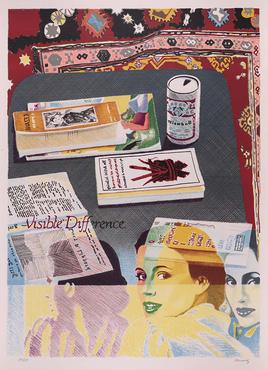
Howard Kanovitz was a pioneering painter in the Photorealist and Hyperrealist Movements, which emerged in the 1960s and 1970s in response to the abstract art movement.

Gus Heinze is an American photorealist painter.
John C. Kacere was an American artist. Originally an abstract expressionist, Kacere adopted a photorealist style in 1963. Nearly all of his photorealist paintings depict the midsection of the female body. He is considered one of the original photorealists, although he rejected the term.
Clive Head is a painter from Britain.
Louis K. Meisel is an American author, art dealer and proponent of the photorealist art movement, having coined the term in 1969. He is also the owner of one of the earliest art galleries in SoHo at 141 Prince Street. In addition to Photorealism, Meisel is responsible for the resurgence of interest in the sub-set of American illustration identified as "Pin-up", and is the largest collector of original art of both genres. Louis and Susan Meisel own the largest collections of Photorealism and pin-up art in the world.
Roberto Bernardi is a photorealist painter who explores the beauty of everyday life though the reflections and transparencies in his still life paintings, using as his main subject plates and glasses, kitchens appliances, dishwashers, fridges and more recently lollypops and candies.
Raphaella Beatrice Spence is a British photorealist and hyperrealist painter.
Kelvin Okafor is a British hyperrealist artist who specialises in pencil portraits.
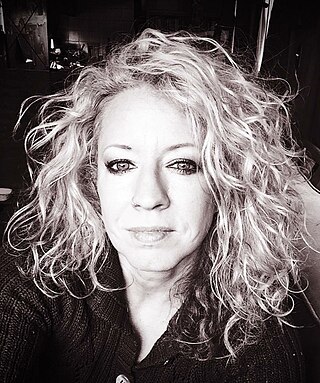
Cheryl Kelley is an American painter known for her photorealism, especially her paintings of classic and muscle cars. Her work has been featured on the cover of Harper's Magazine and can be seen at the Scott Richards Contemporary Art gallery in San Francisco, California, the Bernarducci·Meisel Gallery in New York City, New York, and the Seven Bridges Foundation in Greenwich, Connecticut. In 2009 and 2011 she was a finalist for the Hunting Art Prize, and in 2012 she received a Pollock-Krasner Foundation grant. The art collectors' resource Artsy considers her one of ten "Masters of Photorealism".
References
- ↑ Denis Peterson Data
- ↑ Linda Chase, Photorealism at the Millennium: The Not-So-Innocent Eye: Photorealism in Context. Harry N. Abrams, Inc. New York, 2002.
- ↑ Robert Bechtle: A Retrospective by Michael Auping, Janet Bishop, Charles Ray, and Jonathan Weinberg. University of California Press, Berkeley, CA, (2005). ISBN 978-0-520-24543-3.
- ↑ Battock, Gregory. Preface to Photorealism. Harry N. Abrams, Inc., Publishers, New York, 1980. pp. 8–10.
- ↑ "The Photorealistic Paintings of Denis Peterson". 30 December 2010.
- ↑ "The Art Story, Photorealism - The First Photorealists"
- ↑ Modern Art Insight, Photorealism
- 1 2 3 Thompson, Graham: American Culture in the 1980s (Twentieth Century American Culture) Edinburgh University Press, 2007 ISBN 978-0748619108
- ↑ Rik Rawling, "Keep it Hyper Real" Archived 2009-02-24 at the Wayback Machine Word Press]
- ↑ Plus One Gallery - NY Through the Eyes of Denis Peterson
- ↑ "25+ Mind-Blowing Hyperrealistic Paintings". 25 July 2017.
- 1 2 Art: The Whole Story, 2010 Thames & Hudson Publishing ISBN 9780500288955
- ↑ G. Lipovetsky, Hypermodern Times, Cambridge: Polity Press, 2005
- ↑ Interview FOXTV - Real Talk with Brenda Blackman
- ↑ Stephen Farthing: From Cave Painting to Street Art- 40,000 Years of Creativity, Rizzoli Publishing 2010 ISBN 978-0-7893-1833-6
- ↑ Chris Rywalt, "NYC Art"
- 1 2 Joshua Rose, "Beyond Perception", American Art Collector magazine, November 2008 pp. 154–158
- ↑ Didi Menendez, "Denis Peterson", Poets and Artists magazine, December 2009 pp. 13–19
- ↑ Art Without Edges: Images of Genocide in Lower Manhattan by Robert Ayers "Browser Compatibility". Archived from the original on 2007-05-04. Retrieved 2007-04-29.
- ↑ "Interview Cable News 12 with John Baske". Archived from the original on 2007-08-14. Retrieved 2007-04-29.
- ↑ Chris Ashley, "Show Review" Archived 2007-05-02 at the Wayback Machine
- ↑ Commentary by Fergal Keane, Special Correspondent BBC
- ↑ Jean Baudrillard, "The Procession of Simulacra", in Media and Cultural Studies : Keyworks, Durham & Kellner, eds. ISBN 0-631-22096-8.
- ↑ Horrocks, Chris and Zoran Jevtic. Baudrillard For Beginners. Cambridge: Icon Books, 1996. pp. 80–84
- ↑ Ari Siletz, "A Brush Stroke for Every Human Suffering", Media Watch
- ↑ Chris Rywalt, "Urban Perspectives", NYC Art
- ↑ Rik Rawling, "Keep it Hyper Real", WordPress 2009
- ↑ Richard Hartley-Parkinson, "Artist Denis Peterson’s realistic paintings that look like photographs." European Union Times, Dec 31, 2010, p. 1
- ↑ A. Kirby, Digimodernism: How New Technologies Dismantle the Postmodern and Reconfigure our Culture (New York/London: Continuum, 2009)
- ↑ Didi Menendez and Geof Huth, "In Pursuit of USA Today", Poets and Artists magazine - Special Edition, Nov. 2010, pp. 43–46
- ↑ John Bittinger Klomp, "Denis Peterson - His Metamodernist/Hyperrealist Art"
- ↑ Timotheus Vermeulen & Robin van den Akkera, Journal of Aesthetics & Culture, Vol. 2, 2010